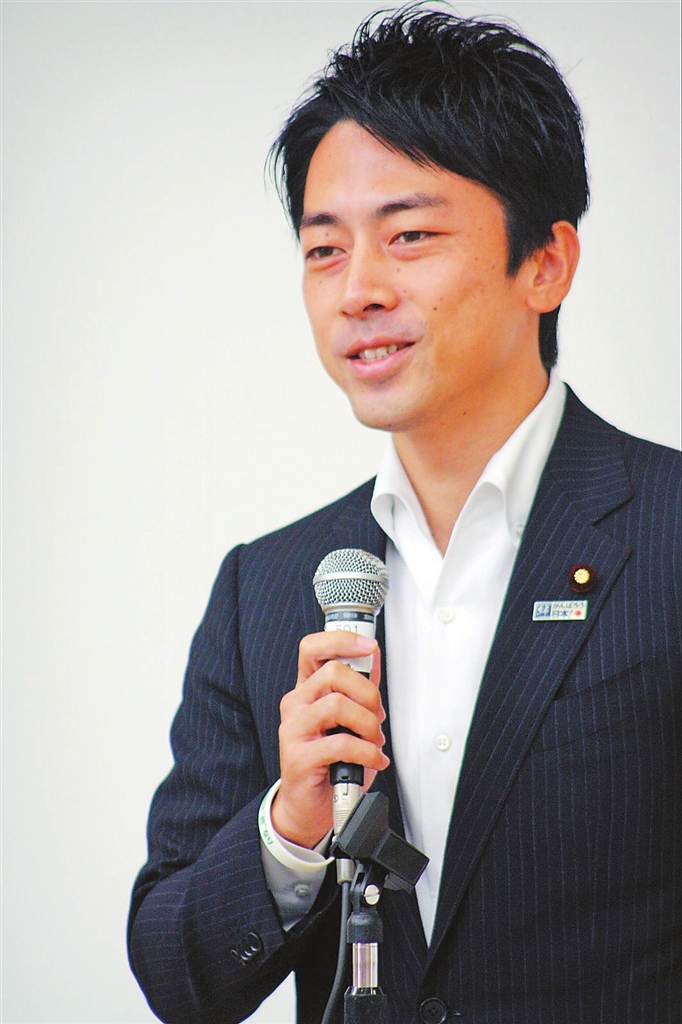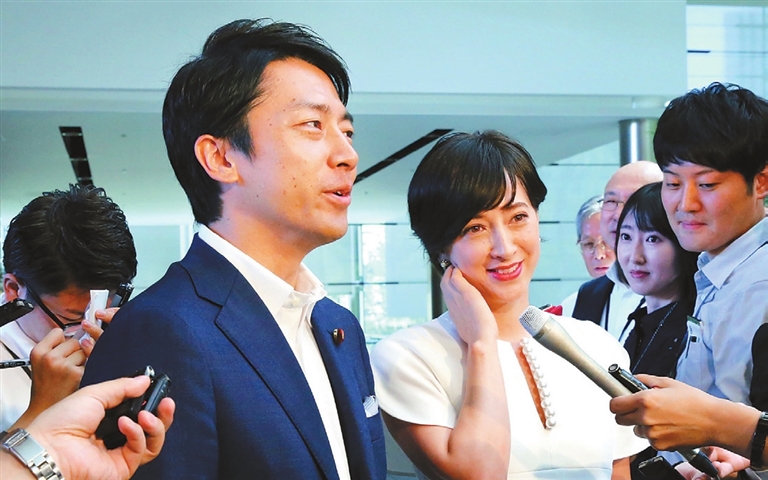

JAPANESE Environment Minister Shinjiro Koizumi, who has said he will take paternity leave in a rare move for a Japanese man, announced Jan. 17 the birth of his first child: a boy. Koizumi, son of charismatic former Prime Minister Junichiro Koizumi and seen as a future leader himself, said earlier this month he was planning to take two weeks of leave over three months, in an effort to become a role model for Japan’s working fathers. It is the first time a Cabinet minister has publicly committed to such a move in the country. But some lawmakers have criticized his interest in taking parental leave, saying he should prioritize his public duties. The telegenic Koizumi, popularly known as Shinjiro to distinguish him from his father, grabbed headlines in the summer of 2019 with news he was marrying Christel Takigawa, a French-Japanese television personality known as the face of Tokyo’s successful bid for the 2020 Summer Olympics. Soon after, he was named environment minister. Koizumi told reporters he had come straight from the hospital and had been by his wife’s side for the birth. “As a father, I’m really happy that a healthy boy was safely born,” a tired but happy Koizumi told a news conference. “Both of them are doing well, that’s the most important thing. What a relief.” Japanese Prime Minister Shinzo Abe has been trying to encourage more men to take paternity leave, and for businesses to allow a better work-life balance, as part of his “Womenomics” program of bolstering women’s employment. While Japan’s parental leave policies are among the world’s most generous, providing men and women with partially paid leave of up to a year, or longer if there is no public child care, just 6 percent of eligible fathers take child care leave, and most of them for less than a week, according to government data. The figure is 3 percent a few years ago, but far short of the 13 percent target set by the government for 2020. Koizumi acknowledged that he’s heard comments both for and against his decision. “I’ll keep a priority on policy and on managing anything unexpected that comes up, while also carving out time for childcare,” he added. “I don’t really feel like a father yet, but that should come soon. I want to be a father like my dad was,” he was quoted by NHK television as saying. Shinjiro’s father divorced his mother when she was pregnant with their third son and never remarried. He told the couple when they announced their marriage that everybody “should try matrimony once.” Meanwhile, The Times has selected Koizumi as one of the “Twenty faces to look out for in 2020.” There are two opposite views of Koizumi — either he is a hereditary political aristocrat with a pretty face but no original ideas or he is the most interesting and promising Japanese politician of his generation, the British newspaper said. It added that Koizumi will face a real test this year. Koizumi looks full of confidence and has expensive-looking hair, the paper said, adding that he is also a shrewd political operator who has risen to power in a nationalist conservative government while maintaining about himself an aura of liberal-minded cool. He is regularly rated by voters as the lawmaker they’d like most to see in the top job when Abe steps down. Koizumi, 38, became the third youngest lawmaker to join a post-World War II Japanese Cabinet when Abe announced a reshuffle in September. The second son of 56th Japanese Prime Minister Junichiro Koizumi and younger brother of actor Kotaro Koizumi, he enjoys popularity among both the Japanese public and younger LDP lawmakers. Koizumi did a stint as a researcher at Washington-based think tank Center for Strategic and International Studies, while also active as Young Leader of the Pacific Forum CSIS. He served as his father’s political secretary. He was elected to the lower house in 2009 after his father’s retirement. Koizumi has served as parliamentary vice minister for reconstruction of the northeast region of Japan that was devastated by the March 2011 tsunami and nuclear disaster. He has not, however, overtly backed his father’s calls for Japan to abandon nuclear energy immediately. He has spoken in favor of letting married couples use separate surnames, media reported, a practice banned for official documents under current law. As environment minister, Koizumi could be in an awkward spot given Abe’s commitment to nuclear power. The elder Koizumi, now retired from parliament, became a harsh critic of atomic energy after the 2011 Fukushima nuclear crisis. The closest Koizumi had come to a Cabinet post previously was his 2014 appointment as parliamentary vice minister for reconstruction of the tsunami-hit Tohoku region. “Until now, Shinjiro has been mostly performance and it is not clear how much policy know-how he has,” said University of Tokyo professor Yu Uchiyama. “Now that will become clear.” Koizumi has suggested in the past that taking a high-profile post too soon was risky, but some who know him said he might not want to wait too long before seeking the premiership. “He’s a young guy in a hurry,” said one political source speaking on condition of anonymity. Abe, who returned to power in December 2012 promising to reboot the economy and bolster defense, became Japan’s longest-serving premier in November. His tenure as Liberal Democratic Party leader, which ensures the premiership if the LDP stays in power, ends in September 2021. Party rules need to be changed if he wants another term. Koizumi shares some of Abe’s conservative views — he has paid his respects at Tokyo’s controversial Yasukuni Shrine for war dead — but voted for a rival in a 2012 party leadership election. He has shaped his image as a reformer but taken care not to offend party elders. Koizumi graduated from a private Japanese university in Japan and has a master’s degree from New York’s Columbia University. In 2009 — the LDP was knocked out of power for three years — he won a lower house seat vacated by his father. Shinjiro timeline 2007: He spent one year as a part-time research fellow at the Center for Strategic and International Studies and as Young Leader of the Pacific Forum CSIS before returning to Japan in 2007. 2011: Koizumi became head of the LDP’s young legislators caucus in October 2011, a post previously held by former prime ministers. 2013: In the subsequent House of Councillors election in July 2013, he focused his campaigning efforts on disaster zones, outlying islands and areas in rapid population decline, giving speeches in support of their local LDP candidates. 2013: In October 2013, he was appointed parliamentary secretary in charge of Tohoku Recovery, in which capacity he would oversee post-disaster reconstruction efforts in Iwate Prefecture and Miyagi Prefecture. 2017: In April 2017, in the aftermath of the Moritomo Gakuen scandal surrounding Prime Minister Abe, polls by Yomiuri and NTV showed Koizumi as the most favored LDP leader (and presumptive Prime Minister), surpassing both Abe and challenger Shigeru Ishiba. 2019: On Sept. 11, 2019, Abe appointed Koizumi as minister of the environment.(SD-Agencies) | 
